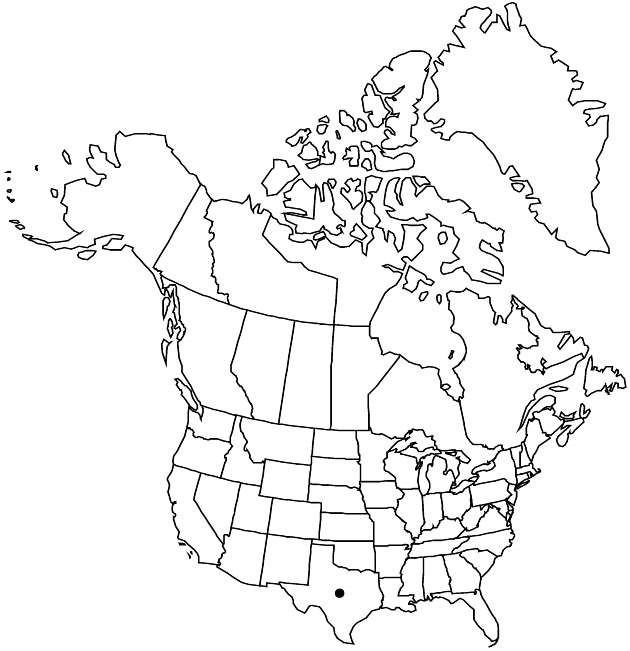Difference between revisions of "Perityle parryi"
Smithsonian Contr. Knowl. 5(6): 106. 1853.
FNA>Volume Importer |
imported>Volume Importer |
||
| (2 intermediate revisions by 2 users not shown) | |||
| Line 51: | Line 51: | ||
|publication year=1853 | |publication year=1853 | ||
|special status= | |special status= | ||
| − | |source xml=https:// | + | |source xml=https://bitbucket.org/aafc-mbb/fna-data-curation/src/2e0870ddd59836b60bcf96646a41e87ea5a5943a/coarse_grained_fna_xml/V19-20-21/V21_800.xml |
|tribe=Asteraceae tribe Heliantheae | |tribe=Asteraceae tribe Heliantheae | ||
|subtribe=Asteraceae (tribe Heliantheae) subtribe Peritylinae | |subtribe=Asteraceae (tribe Heliantheae) subtribe Peritylinae | ||
Latest revision as of 20:14, 5 November 2020
Perennials or subshrubs, 10–75 cm (in rock crevices, or in soil); puberulent, villous, or rarely tomentose. Leaves: petioles 12–40 mm; blades usually cordate to subreniform, 8–40(–50) × 8–50(–60) mm, margins irregularly dentate, laciniate, or ± 3-lobed, seldom more divided. Heads borne singly or (2–3) in corymbiform arrays, 8–10 × 7–14 mm. Peduncles 10–70 mm. Involucres campanulate to hemispheric. Phyllaries 28–36, lanceolate to linear, seldom oblanceolate, 5–9 × 0.5–1.6 mm, apices acute to short- or long-attenuate. Ray florets usually 12–18 (sometimes 0 or 1–6 in plants from w Presidio County); corollas yellow, laminae oblong, 4–10 × 2–4 mm. Disc florets 60–100; corollas yellow, tubes 1–1.3 mm, throats tubular, 2.5–3.2 mm, lobes 0.4–0.6 mm. Cypselae linear-elliptic to narrowly oblanceolate, (2–)3–4 mm, margins usually prominently calloused (sometimes thin), usually densely ciliate, sometimes short-hairy; pappi 0 or of 1(–2) usually antrorsely, sometimes erectly or retrorsely barbellate, bristles (1–)3–4(–6) mm plus crowns of hyaline, laciniate scales. 2n = 34.
Phenology: Flowering year around.
Habitat: Igneous or limestone rock or soil
Elevation: 700–2000 m
Distribution

Tex., Mexico (Chihuahua).
Discussion
Perityle parryi occurs in southern Presidio and Brewster counties. Atypical populations with pappus bristles resembling those of P. vaseyi and/or with ray florets present or absent may be found in western Presidio County.
Selected References
None.